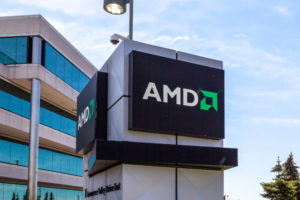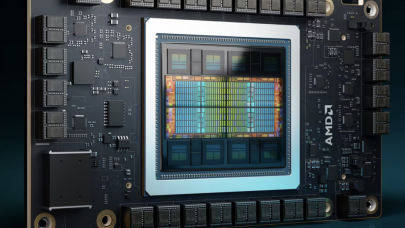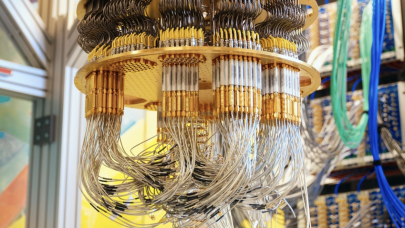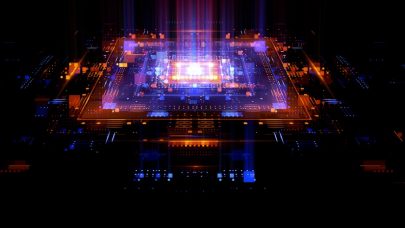SAN FRANCISCO, Oct. 10, 2024 — AMD today announced the latest accelerator and networking solutions that will power the next generation of AI infrastructure at scale: AMD Instinct MI325X accelerators, the AMD Pensando Pollara 400 NIC and the AMD Pensando Salina DPU. AMD Instinct MI325X accelerators set a new standard in performance for Gen AI models and data centers.

Built on the AMD CDNA 3 architecture, AMD Instinct MI325X accelerators are designed for exceptional performance and efficiency for demanding AI tasks spanning foundation model training, fine-tuning and inferencing. Together, these products enable AMD customers and partners to create highly performant and optimized AI solutions at the system, rack and data center level.
“AMD continues to deliver on our roadmap, offering customers the performance they need and the choice they want, to bring AI infrastructure, at scale, to market faster,” said Forrest Norrod, executive vice president and general manager, Data Center Solutions Business Group, AMD. “With the new AMD Instinct accelerators, EPYC processors and AMD Pensando networking engines, the continued growth of our open software ecosystem, and the ability to tie this all together into optimized AI infrastructure, AMD underscores the critical expertise to build and deploy world class AI solutions.”
AMD Instinct MI325X Extends Leading AI Performance
AMD Instinct MI325X accelerators deliver industry-leading memory capacity and bandwidth, with 256GB of HBM3E supporting 6.0TB/s offering 1.8X more capacity and 1.3x more bandwidth than the H200. The AMD Instinct MI325X also offers 1.3X greater peak theoretical FP16 and FP8 compute performance compared to H200.
This leadership memory and compute can provide up to 1.3X the inference performance on Mistral 7B at FP16, 1.2X the inference performance on Llama 3.1 70B at FP8 and 1.4X the inference performance on Mixtral 8x7B at FP16 of the H200.
AMD Instinct MI325X accelerators are currently on track for production shipments in Q4 2024 and are expected to have widespread system availability from a broad set of platform providers, including Dell Technologies, Eviden, Gigabyte, Hewlett Packard Enterprise, Lenovo, Supermicro and others starting in Q1 2025.
Continuing its commitment to an annual roadmap cadence, AMD previewed the next-generation AMD Instinct MI350 series accelerators. Based on AMD CDNA 4 architecture, AMD Instinct MI350 series accelerators are designed to deliver a 35x improvement in inference performance compared to AMD CDNA 3-based accelerators.
The AMD Instinct MI350 series will continue to drive memory capacity leadership with up to 288GB of HBM3E memory per accelerator. The AMD Instinct MI350 series accelerators are on track to be available during the second half of 2025.
AMD Next-Gen AI Networking
AMD is leveraging the most widely deployed programmable DPU for hyperscalers to power next-gen AI networking. Split into two parts: the front-end, which delivers data and information to an AI cluster, and the backend, which manages data transfer between accelerators and clusters, AI networking is critical to ensuring CPUs and accelerators are utilized efficiently in AI infrastructure.
To effectively manage these two networks and drive high performance, scalability and efficiency across the entire system, AMD introduced the AMD Pensando Salina DPU for the front-end and the AMD Pensando Pollara 400, the industry’s first Ultra Ethernet Consortium (UEC) ready AI NIC, for the back-end.
The AMD Pensando Salina DPU is the third generation of the world’s most performant and programmable DPU, bringing up to 2X the performance, bandwidth and scale compared to the previous generation. Supporting 400G throughput for fast data transfer rates, the AMD Pensando Salina DPU is a critical component in AI front-end network clusters, optimizing performance, efficiency, security and scalability for data-driven AI applications.
The UEC-ready AMD Pensando Pollara 400, powered by the AMD P4 Programmable engine, is the industry’s first UEC-ready AI NIC. It supports the next-gen RDMA software and is backed by an open ecosystem of networking. The AMD Pensando Pollara 400 is critical for providing leadership performance, scalability and efficiency of accelerator-to-accelerator communication in back-end networks.
Both the AMD Pensando Salina DPU and AMD Pensando Pollara 400 are sampling with customers in Q4’24 and are on track for availability in the first half of 2025.
AMD AI Software Delivering New Capabilities for Generative AI
AMD continues its investment in driving software capabilities and the open ecosystem to deliver powerful new features and capabilities in the AMD ROCm open software stack.
Within the open software community, AMD is driving support for AMD compute engines in the most widely used AI frameworks, libraries and models including PyTorch, Triton, Hugging Face and many others. This work translates to out-of-the-box performance and support with AMD Instinct accelerators on popular generative AI models like Stable Diffusion 3, Meta Llama 3, 3.1 and 3.2 and more than one million models at Hugging Face.
Beyond the community, AMD continues to advance its ROCm open software stack, bringing the latest features to support leading training and inference on Generative AI workloads. ROCm 6.2 now includes support for critical AI features like FP8 datatype, Flash Attention 3, Kernel Fusion and more. With these new additions, ROCm 6.2, compared to ROCm 6.0, provides up to a 2.4X performance improvement on inference and 1.8X on training for a variety of LLMs.
About AMD
For more than 50 years AMD has driven innovation in high-performance computing, graphics, and visualization technologies. Billions of people, leading Fortune 500 businesses, and cutting-edge scientific research institutions around the world rely on AMD technology daily to improve how they live, work, and play. AMD employees are focused on building leadership high-performance and adaptive products that push the boundaries of what is possible.
Source: AMD
































































